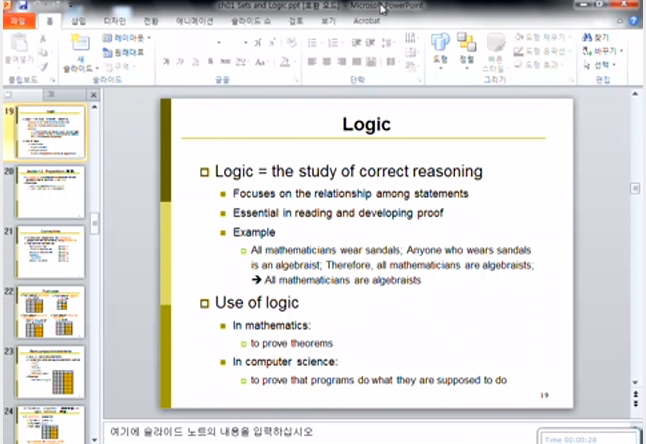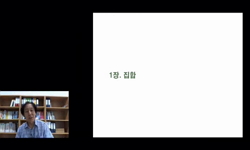Background: Graves’ disease (GD) is an autoimmune thyroid disorder caused by antibodies stimulating the thyrotropin (TSH) receptor. TSH receptor antibody (TRAb) measurement is useful for predicting GD relapse after antithyroid drug (ATD) treatment. ...
http://chineseinput.net/에서 pinyin(병음)방식으로 중국어를 변환할 수 있습니다.
변환된 중국어를 복사하여 사용하시면 됩니다.
- 中文 을 입력하시려면 zhongwen을 입력하시고 space를누르시면됩니다.
- 北京 을 입력하시려면 beijing을 입력하시고 space를 누르시면 됩니다.



Changes in Thyroid Peroxidase and Thyroglobulin Antibodies Might Be Associated with Graves’ Disease Relapse after Antithyroid Drug Therapy
한글로보기https://www.riss.kr/link?id=A106374143
- 저자
- 발행기관
- 학술지명
- 권호사항
-
발행연도
2019
-
작성언어
English
- 주제어
-
등재정보
KCI등재,SCOPUS,SCIE
-
자료형태
학술저널
- 발행기관 URL
-
수록면
268-274(7쪽)
-
KCI 피인용횟수
1
- DOI식별코드
- 제공처
-
0
상세조회 -
0
다운로드
부가정보
다국어 초록 (Multilingual Abstract)
Background: Graves’ disease (GD) is an autoimmune thyroid disorder caused by antibodies stimulating the thyrotropin (TSH) receptor. TSH receptor antibody (TRAb) measurement is useful for predicting GD relapse after antithyroid drug (ATD) treatment.
However, the association of other thyroid autoantibodies with GD relapse remains obscure.
Methods: This retrospective study enrolled patients with GD who were initially treated with ATD. TRAb, thyroid peroxidase antibody (TPOAb), and thyroglobulin antibody (TgAb) were measured at the initial diagnosis and at the time of ATD discontinuation.
Results: A total of 55 patients were enrolled. The mean age was 49.7 years, and 39 patients (70.9%) were female. Antibody positivity at diagnosis was 90.9%, 69.1%, and 61.9% for TRAb, TPOAb, TgAb, respectively. Median ATD treatment period was 15.1months. At the time of ATD withdrawal, TRAb titers decreased uniformly overall. Conversely, TPOAb and TgAb showed variouschanges. After withdrawal of ATD, 19 patients (34.5%) experienced relapse. No clinical features or laboratory results were significantly related to relapse in the overall patient group. However, in the TPOAb positive group at diagnosis, increasing titer of TPOAbor TgAb after ATD treatment was significantly and independently related to relapse free survival (TPOAb: hazard ratio [HR], 17.99;95% confidence interval [CI], 1.66 to 195.43; P=0.02) (TgAb: HR, 5.73; 95% CI, 1.21 to 27.26; P=0.03).
Conclusion: Changes in TPOAb or TgAb titers during treatment might be useful for predicting relapse after ATD treatment in patients with positive TPOAb at diagnosis.
참고문헌 (Reference)
1 허정은, "그레이브스병 환자에게서 유전자재조합 사람 TSH 수용체를 이용한 2세대 TSH 결합억제 면역글로불린 측정법의 임상적 유용" 대한내분비학회 23 (23): 179-185, 2008
2 권혜미, "Usefulness of Measuring Thyroid Stimulating Antibody at the Time of Antithyroid Drug Withdrawal for Predicting Relapse of Graves Disease" 대한내분비학회 31 (31): 300-310, 2016
3 Stefanic M, "Thyroid peroxidase autoantibodies are associated with a lesser likelihood of late reversion to hyperthyroidism after successful non-ablative treatment of Graves’ disease in Croatian patients" 37 : 71-77, 2014
4 Katahira M, "Thyroglobulin autoantibodies are associated with refractoriness to antithyroid drug treatment for Graves’ disease" 55 : 1519-1524, 2016
5 Takaichi Y, "The significance of antithyroglobulin and antithyroidal microsomal antibodies in patients with hyperthyroidism due to Graves’ disease treated with antithyroidal drugs" 68 : 1097-1100, 1989
6 Weetman AP, "The immunomodulatory effects of antithyroid drugs" 4 : 145-146, 1994
7 문재훈, "The Diagnosis and Management of Hyperthyroidism in Korea: Consensus Report of the Korean Thyroid Association" 대한내분비학회 28 (28): 275-279, 2013
8 Carella C, "Serum thyrotropin receptor antibodies concentrations in patients with Graves’ disease before, at the end of methimazole treatment, and after drug withdrawal: evidence that the activity of thyrotropin receptor antibody and/or thyroid response modify during the observation period" 16 : 295-302, 2006
9 Hamada N, "Retrospective reevaluation of the significance of thyroid microsomal antibody in the treatment of Graves’ disease" 114 : 328-335, 1987
10 Laurberg P, "Remission of Graves’ disease during anti-thyroid drug therapy. Time to reconsider the mechanism?" 155 : 783-786, 2006
1 허정은, "그레이브스병 환자에게서 유전자재조합 사람 TSH 수용체를 이용한 2세대 TSH 결합억제 면역글로불린 측정법의 임상적 유용" 대한내분비학회 23 (23): 179-185, 2008
2 권혜미, "Usefulness of Measuring Thyroid Stimulating Antibody at the Time of Antithyroid Drug Withdrawal for Predicting Relapse of Graves Disease" 대한내분비학회 31 (31): 300-310, 2016
3 Stefanic M, "Thyroid peroxidase autoantibodies are associated with a lesser likelihood of late reversion to hyperthyroidism after successful non-ablative treatment of Graves’ disease in Croatian patients" 37 : 71-77, 2014
4 Katahira M, "Thyroglobulin autoantibodies are associated with refractoriness to antithyroid drug treatment for Graves’ disease" 55 : 1519-1524, 2016
5 Takaichi Y, "The significance of antithyroglobulin and antithyroidal microsomal antibodies in patients with hyperthyroidism due to Graves’ disease treated with antithyroidal drugs" 68 : 1097-1100, 1989
6 Weetman AP, "The immunomodulatory effects of antithyroid drugs" 4 : 145-146, 1994
7 문재훈, "The Diagnosis and Management of Hyperthyroidism in Korea: Consensus Report of the Korean Thyroid Association" 대한내분비학회 28 (28): 275-279, 2013
8 Carella C, "Serum thyrotropin receptor antibodies concentrations in patients with Graves’ disease before, at the end of methimazole treatment, and after drug withdrawal: evidence that the activity of thyrotropin receptor antibody and/or thyroid response modify during the observation period" 16 : 295-302, 2006
9 Hamada N, "Retrospective reevaluation of the significance of thyroid microsomal antibody in the treatment of Graves’ disease" 114 : 328-335, 1987
10 Laurberg P, "Remission of Graves’ disease during anti-thyroid drug therapy. Time to reconsider the mechanism?" 155 : 783-786, 2006
11 Laurberg P, "Relapse following antithyroid drug therapy for Graves’ hyperthyroidism" 21 : 415-421, 2014
12 Sun Mi Hwang, "Predictive factors for early response to methimazole in children and adolescents with Graves disease: a single-institute study between 1993 and 2013" 대한소아내분비학회 21 (21): 70-74, 2016
13 Smycznyska J, "Persistent remission of Graves’ disease or evolution from Graves’ disease to Hashimoto’s thyroiditis in childhood : a report of 6 cases and clinical implications" 35 : 335-341, 2014
14 Burch HB, "Management of Graves disease : a review" 314 : 2544-2554, 2015
15 Schott M, "Improved prediction of relapse of Graves’ thyrotoxicosis by combined determination of TSH receptor and thyroperoxidase antibodies" 39 : 56-61, 2007
16 Smith TJ, "Graves’ disease" 375 : 1552-1565, 2016
17 Wilmar M. Wiersinga, "Graves’ Disease: Can It Be Cured?" 대한내분비학회 34 (34): 29-38, 2019
18 최훈성, "Free Thyroxine, Anti-Thyroid Stimulating Hormone Receptor Antibody Titers, and Absence of Goiter Were Associated with Responsiveness to Methimazole in Patients with New Onset Graves' Disease" 대한내분비학회 32 (32): 281-287, 2017
19 Chiovato L, "Expression of the microsomal antigen on the surface of continuously cultured rat thyroid cells is modulated by thyrotropin" 61 : 12-16, 1985
20 Guilhem I, "Differential evolution of thyroid peroxidase and thyrotropin receptor antibodies in Graves’ disease : thyroid peroxidase antibody activity reverts to pretreatment level after carbimazole withdrawal" 16 : 1041-1045, 2006
21 Romaldini JH, "Comparison of effects of high and low dosage regimens of antithyroid drugs in the management of Graves’ hyperthyroidism" 57 : 563-570, 1983
22 Marcocci C, "Changes of circulating thyroid autoantibody levels during and after the therapy with methimazole in patients with Graves’ disease" 5 : 13-19, 1982
23 Struja T, "Can we predict relapse in Graves’ disease? Results from a systematic review and meta-analysis" 176 : 87-97, 2017
24 Liu J, "Antithyroid drug therapy for Graves’ disease and implications for recurrence" 2017 : 3813540-, 2017
동일학술지(권/호) 다른 논문
-
Radioactive Iodine Refractory Differentiated Thyroid Cancer and Redifferentiation Therapy
- 대한내분비학회
- Jierui Liu
- 2019
- KCI등재,SCOPUS,SCIE
-
Nonalcoholic Fatty Liver Disease and Diabetes: An Epidemiological Perspective
- 대한내분비학회
- 이은정
- 2019
- KCI등재,SCOPUS,SCIE
-
Recent Progress on Branched-Chain Amino Acids in Obesity, Diabetes, and Beyond
- 대한내분비학회
- Md Abu Bakkar Siddik
- 2019
- KCI등재,SCOPUS,SCIE
-
- 대한내분비학회
- Jack Alistair Sargeant
- 2019
- KCI등재,SCOPUS,SCIE
분석정보
인용정보 인용지수 설명보기
학술지 이력
| 연월일 | 이력구분 | 이력상세 | 등재구분 |
|---|---|---|---|
| 2023 | 평가예정 | 해외DB학술지평가 신청대상 (해외등재 학술지 평가) | |
| 2020-01-01 | 평가 | 등재학술지 유지 (해외등재 학술지 평가) |  |
| 2013-12-16 | 학술지명변경 | 한글명 : 대한내분비학회지 -> Endocrinology and Metabolism외국어명 : Endocrinology and Metabolism -> 미등록 |  |
| 2013-01-01 | 평가 | 등재 1차 FAIL (등재유지) |  |
| 2010-06-28 | 학술지명변경 | 외국어명 : Journal of Korean Endocrin Society -> Endocrinology and Metabolism |  |
| 2010-01-01 | 평가 | 등재학술지 유지 (등재유지) |  |
| 2007-06-05 | 학회명변경 | 영문명 : The Korean Society Of Endocrinology -> Korean Endocrin Society |  |
| 2007-06-01 | 학술지명변경 | 외국어명 : Journal of Korean Society of Endocrinology -> Journal of Korean Endocrin Society |  |
| 2007-01-01 | 평가 | 등재학술지 선정 (등재후보2차) |  |
| 2006-01-01 | 평가 | 등재후보 1차 PASS (등재후보1차) |  |
| 2004-01-01 | 평가 | 등재후보학술지 선정 (신규평가) |  |
학술지 인용정보
| 기준연도 | WOS-KCI 통합IF(2년) | KCIF(2년) | KCIF(3년) |
|---|---|---|---|
| 2016 | 0.23 | 0.23 | 0.26 |
| KCIF(4년) | KCIF(5년) | 중심성지수(3년) | 즉시성지수 |
| 0.23 | 0.22 | 0.508 | 0.08 |




 KCI
KCI





